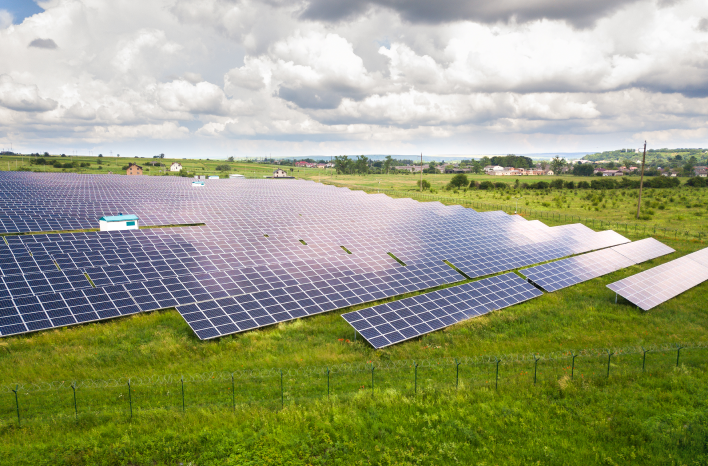The ideal time for photovoltaics
Pay only 0.05 €/kWh from now on and lock in the price for the next 20 years
Your own solar power plant can cover 20-80% of your consumption. On average, your investment will pay for itself in 4-6 years. Because you produce most of the energy yourself and cover your short-term requirements with batteries (peak shaving).
Reported by
Subsidies 45%
for photovoltaics
The Green for Business project reduces the carbon footprint and promotes energy decentralisation. Applications are simple and require a mandatory energy audit. Subsidies will be available until 2029. Companies can receive subsidies of up to €70,000 for photovoltaics, heat pumps and audits. A total of €80 million is earmarked for approximately 1,330 businesses.
Small company
| Annual production: | 33 MWh |
| The size of the power plant: | 30 kWp |
| Number of panels: | 68 panels |
| Annual savings: | 6000 € |
| Permission: | Without planning permission and ÉRU licence |
| Subsidies: | up to 45% of the price |
| Returns: | 4 years |
| Implementation: | within 2 months |
| Price from: | 24 000 € without VAT |
Medium-sized company
| Annual production: | 110 MWh |
| The size of the power plant: | 99.9 kWp |
| Number of panels: | 172 panels |
| Annual savings: | 20 500 € |
| Permission: | necessary building permit stat. assessment and license ÉRU |
| Subsidies: | up to 45% of the price |
| Returns: | 4 years |
| Implementation: | within 4 months |
| Price from: | 80 000 € without VAT |
Residential building or JVU
| Annual production: | 550 MWh |
| The size of the power plant: | 500 kWp |
| Number of panels: | 744 panels |
| Annual savings: | 102 000 € |
| Permission: | necessary building permit stat. assessment and license ÉRU |
| Subsidies: | Up to €70,000 |
| Returns: | 4 years |
| Implementation: | within 6 months |
| Price from: | 400 000 € without VAT |
Individual solutions
We will be happy to make a tailor-made offer for your company. Take a look at the case study.
Why with us?
Contract process

1.
Analysis and solution design
Evaluation of the customer’s energy needs and development of the photovoltaic system design (size, location of panels, connection options).
2.
Financial planning and subsidies
Assessment of the technical conditions for installation, e.g. the static properties of the roof, and obtaining the necessary permits (e.g. from the electricity distributor, building authority).
3.
Technical assessment and permits
Assessment of the technical conditions for installation, e.g. the static properties of the roof, and obtaining the necessary permits (e.g. from the electricity distributor, building authority).
4.
System installation
Installation of photovoltaic panels and other components (inverters, batteries), connection to the power grid and inspection of the system.
5.
Revision and connection to the network
Ensuring professional review and formal connection of the system to the distribution network. The system must meet legislative and technical requirements.
6.
Commissioning and monitoring
Commissioning of the photovoltaic system, performance monitoring and service provision.
7.
Maintenance and optimization
Regular checks and maintenance of the system to maintain maximum efficiency and extend the life of the equipment.
You often ask
You can store excess energy in battery storage for later use, increasing your energy independence. Alternatively, you can sell the surplus back to the grid or use it to power other devices such as electric vehicle charging stations.
Yes, a PV system can be integrated with your current energy sources, including traditional grids and backup generators. This will increase your energy flexibility and reliability.
We can propose a solution with battery storage or negotiate with the distributor to increase capacity.
In addition to grants, we offer financing options through loans or leasing. We work with financial institutions and can help you obtain favourable financing terms.
We recommend including the PV system in your existing property insurance. We can advise you on choosing the appropriate insurance.
Although energy production is lower in winter due to shorter days and poorer weather, the system still contributes to cost savings. In addition, a properly designed system takes seasonal variations into account.
Installing a PV system typically increases the market value of a property by reducing operating costs and upgrading energy infrastructure.
Let us know,
what you think
We respond by the next day
You have an offer from us within a week

